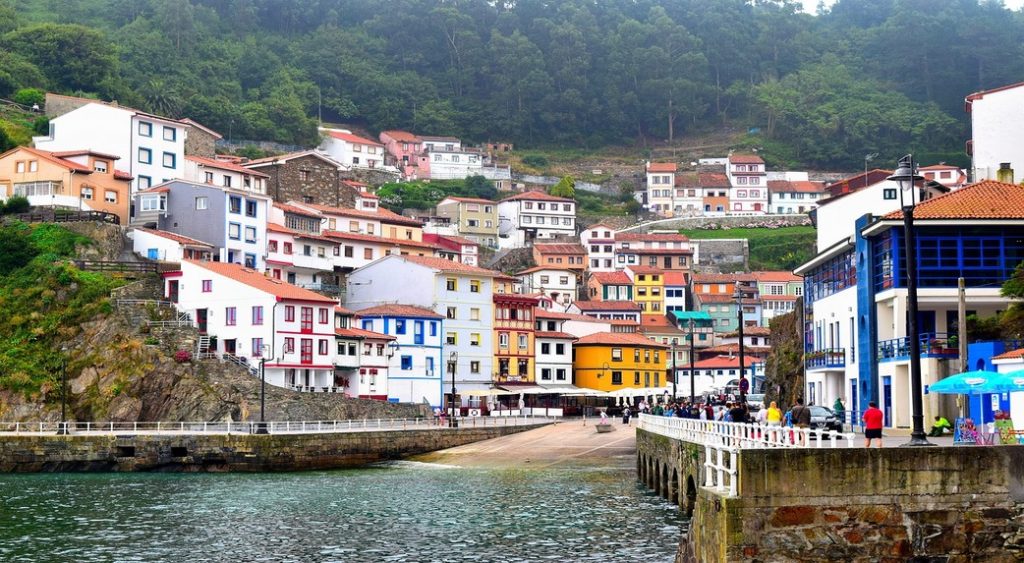Moving to Spain Guide – Chapter 2 – Where in Spain will you move to?
Contents
Guess the region map
The regions of Spain and their characteristics
Spain – a country of many regions and places
Spain is a country of great variety. You may wish to consider where you would like to live both in terms of the geography and also the characteristics of the community you want to live in. Do you want to live on the Costa del Sol or Costa Blanca where there is a large number of English-speaking residents in places like Benidorm or Torremolinos? There you will find many people speaking English and many familiar products in local shops. Or are you more interested in living in a rural area in a little village surrounded by vast, beautiful scenery such as in many places in Andalucia and Galicia? Or are you attracted to living in a larger city such as Madrid or Barcelona with all of the facilities which larger towns and cities provide?
We invite you to start off by considering how much you already know about Spain.
How many parts of Spain do you know already? Test yourself with this map.
Spain has 17 autonomous communities (regions) and 2 autonomous cities. Can you place each of these on the map?
Andalusia (Andalucía)
Aragon (Aragón)
Asturias (Principado de Asturias)
Balearic Islands (Islas Baleares)
Basque Country (País Vasco)
Canary Islands (Islas Canarias)
Cantabria
Castile and León (Castilla y León)
Castilla-La Mancha
Catalonia (Cataluña/Catalunya)
Extremadura
Galicia
La Rioja
Madrid (Comunidad de Madrid)
Murcia (Región de Murcia)
Navarre (Navarra)
Valencian Community (Comunidad Valenciana)
The 2 Autonomous Cities:
Ceuta
Melilla
(Located on the north coast of Africa)
Each region has its own government and varying levels of legislative and financial autonomy.
See the end of this guide to check your answers!
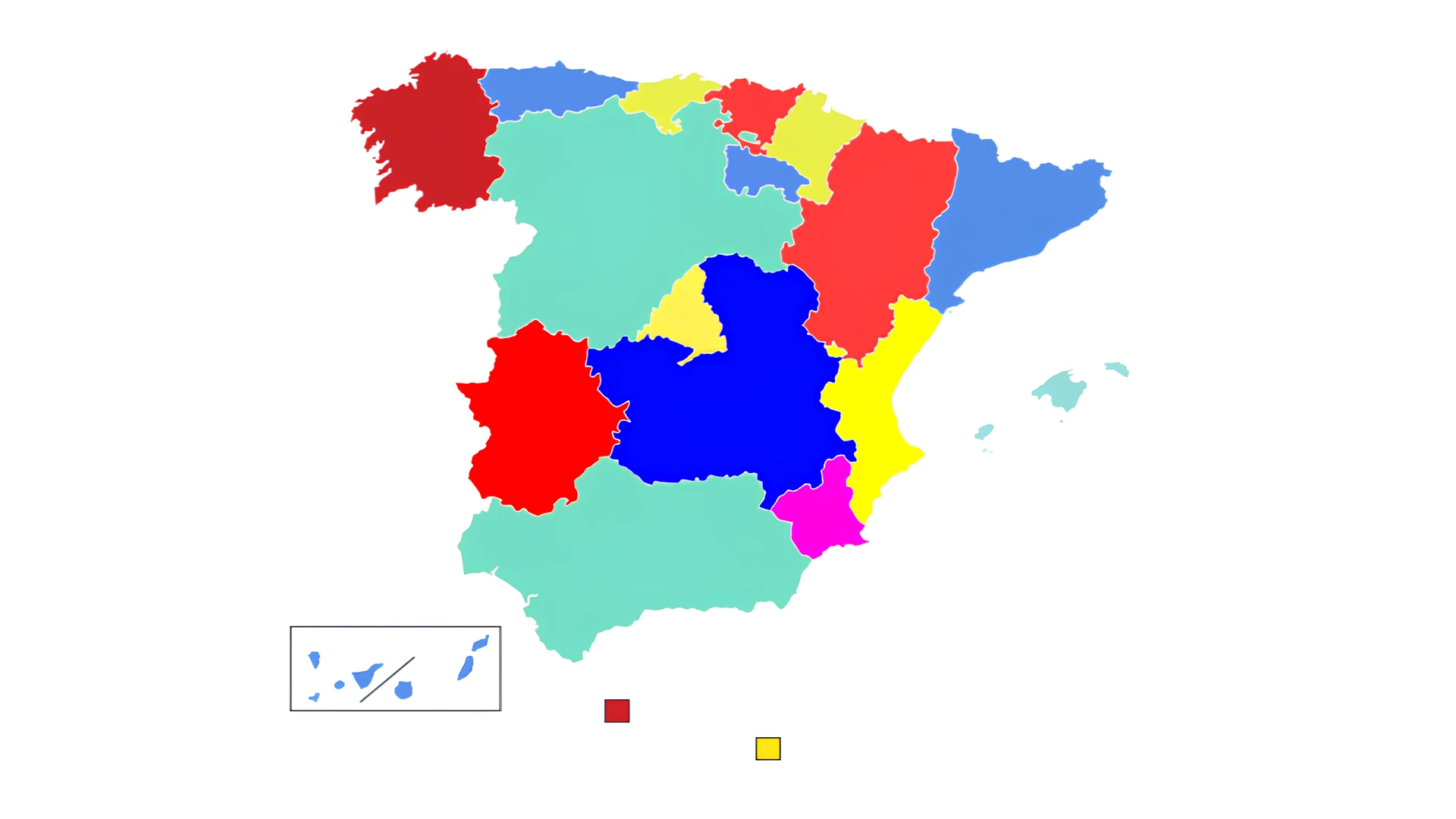
Andalucia
Andalucia is the southernmost, largest and most populated region of Spain. Many immigrants, including thousands of English speakers, have made their homes in villages and towns along the coast. Andalucia is noted for its ‘costas’ – the Costa del Sol, the Costa Tropical, the Costa de la Luz. In addition to these coastal developments, Andalucia is noted for its hills and plains, with some of the richest cultural heritage in Spain. The magnificent cities of Sevilla, Málaga, Granada and Córdoba boast some of the finest historic vestiges of Moorish culture.

Mostly dry and hot, away from the coast and cities like Marbella and Málaga, much of the region is very hilly and mountainous including the snowy peaks of the Sierra Nevada. The countryside is characterised by vast olive groves and the ‘pueblos blancos’, the little white villages which dot the hillsides.
Galicia
Galicia lies at the northwest tip of Spain. An Atlantic coastal region, it has a temperate climate, and with considerable rainfall it is the greenest region in Spain. The population of Galicia is concentrated along the coast, and in the cities of Vigo and A Coruña (Coruña), major port cities. Vigo is the largest fishing port in Europe, and an industrial hub, with shipbuilding and car manufacturing.
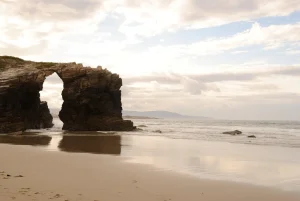
Galicia has a dramatic coastline with many deep estuaries and coastal villages. It is substantially an agricultural region with a lot of small farms and thick forestation. Galicia and Asturias join Brittany, Wales, Scotland and Ireland in Europe’s Celtic fringe, sharing cultural traditions, such as the bagpipes.
Basque Country or Pais Vasco
This region is the most prosperous in Spain in terms of GDP per inhabitant due to a healthy industrial base, tourism and agriculture. There are two official languages in the Basque Country, Basque (Euskara) and Spanish (Castilian) and many places in the Basque area have two quite different sounding names.

The ports of Bilbao and San Sebastian (Donostia) are the main centres of population, and the Atlantic coastline hosts a number of small resorts that have seen development in recent decades but remain relatively serene compared to the Mediterranean coast.
Asturias and Cantabria
Galicia, Cantabria and Asturias are part of España Verde or Green Spain because of their climate. Asturias and Cantabria are small regions in comparison to others. Behind the cliffs and rocks of the coastline lies a narrow and fertile coastal plain. This rises steeply to the Cantabrian Mountains becoming the dramatic mountain range the Picos de Europa.
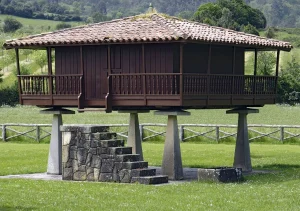
Population centres are around Oviedo and the ports of Santander and Gijón. There are also long stretches of unblemished coastline.
Aragón
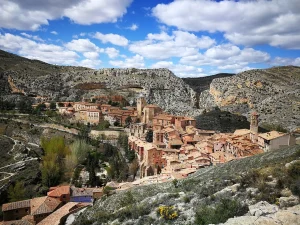
This region is sparsely populated with farming as the main industry. It is very rural. Aragón is rich in history and culture, particularly visible in the Moorish and Mozarabe heritage of Zaragoza, the Mudejar heritage of Teruel, and ancient castles such as the Romanesque fortress at Loarre.
Castilla and León
The historic centre of Castile was Madrid. This was the heart of Spain. Old Castile is now divided into three regions, with Castile and León the largest of the three in terms of surface area, though not in terms of population. Madrid is now an independent autonomous metropolitan region.
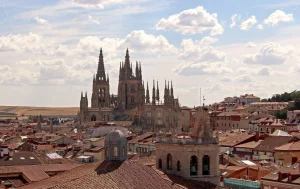
Castile was a desolate area where people lived together in fortified cities or castles. Many of these survive to this day, including the finest cities of Avila, Salamanca, and Segovia, all classed as UNESCO world heritage sites. The region also boasts huge cultural heritage in other cities such as León, Valladolid or Burgos.
Most of this region sits at an altitude of 800m or more, and the climate is dry and cold in winter, and dry and hot in summer.
Madrid
Madrid, the capital of Spain, is an autonomous region with about six million inhabitants. Madrid is famous for its urban architecture, its ornate churches and its world- famous museum and art gallery, the Prado.
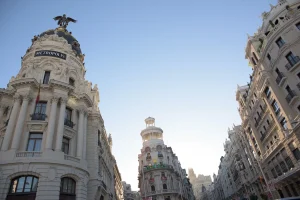
Like the rest of central Spain, Madrid enjoys a continental climate, hot and dry in summer, cold and largely dry in winter.
Navarra and Rioja
Navarra is a region covering the foothills and central western section of the Pyrenees, bordering on France and the Basque country. Like Castile, it is a region that is very dry in parts. The Bardenas Reales natural park offers some spectacular semi- desert landscapes reminiscent of America’s Wild West.
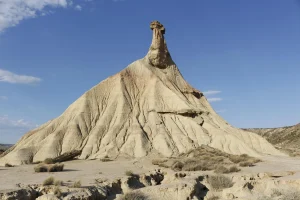
The region of Navarra is an exponent of renewable energy and almost half the region’s electricity is produced by the area’s 28 wind farms. Navarra has a dry sunny climate. The capital city Pamplona is a lively cosmopolitan city. To the south, Rioja, along the upper Ebro valley, is the smallest region in Spain, and is famous for its wines.
Catalonia
Catalonia has almost seven million inhabitants, most of whom speak Speak Catalan and Castilian. In many places there is dual signage.
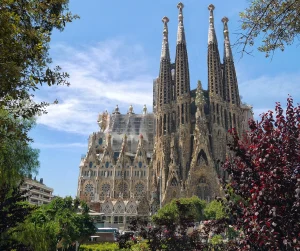
Barcelona, the capital of the region, is Spain’s second city. There is a very active business sector and one of the major ports on the Mediterranean. The highly populated areas extend along the coast, and into the valleys northwest of Barcelona. Barcelona is linked to Madrid by the AVE, Spain’s high-speed rail network. Catalonia, bordering on France, is the most easily accessible of Spain’s regions. Costa Brava is the coastal region of Catalonia.
Castilla la Mancha
Castilla la Mancha is a sparsely populated region with extensive agriculture. Between the cities of Albacete and Ciudad Real vast fields of wheat stretch to the horizon. There are also important vineyards and other crops. This is the land of the legendary Don Quijote.
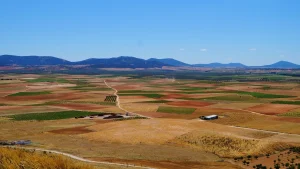
The cultural heritage of Castilla la Mancha has remained remarkably intact, notably with the dramatic city of Toledo, the home of the great Spanish painter El Greco. The area around Toledo is famous for its olives.
Extremadura
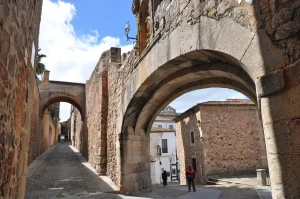
Extremadura, which shares its western border with Portugal, is considered the most underdeveloped region in Spain. However, it has a long history and rich heritage which can be seen in the main towns of Merida, Caceres and Trujillo. Extremadura is sparsely populated with farms, olive groves and small villages.
Valencia and Murcia
The regions of Valencia and Murcia are bordered by the coastline. In this dry central eastern part of Spain, it is on the coastal strip that the large majority of the population is concentrated. There are a number of highly developed coastal resorts but there are still unspoiled sections of coastline away from the crowds.

Tourism and agriculture are the main activities. The fertile valleys are the orchards and vegetable gardens of Spain. This is a dry region where small villages and towns dot the hillsides. The area inland is sparsely populated, unlike the busy towns of Benidorm, La Manga and Valencia.
The Autonomous Regions of Spain
How well did you do?
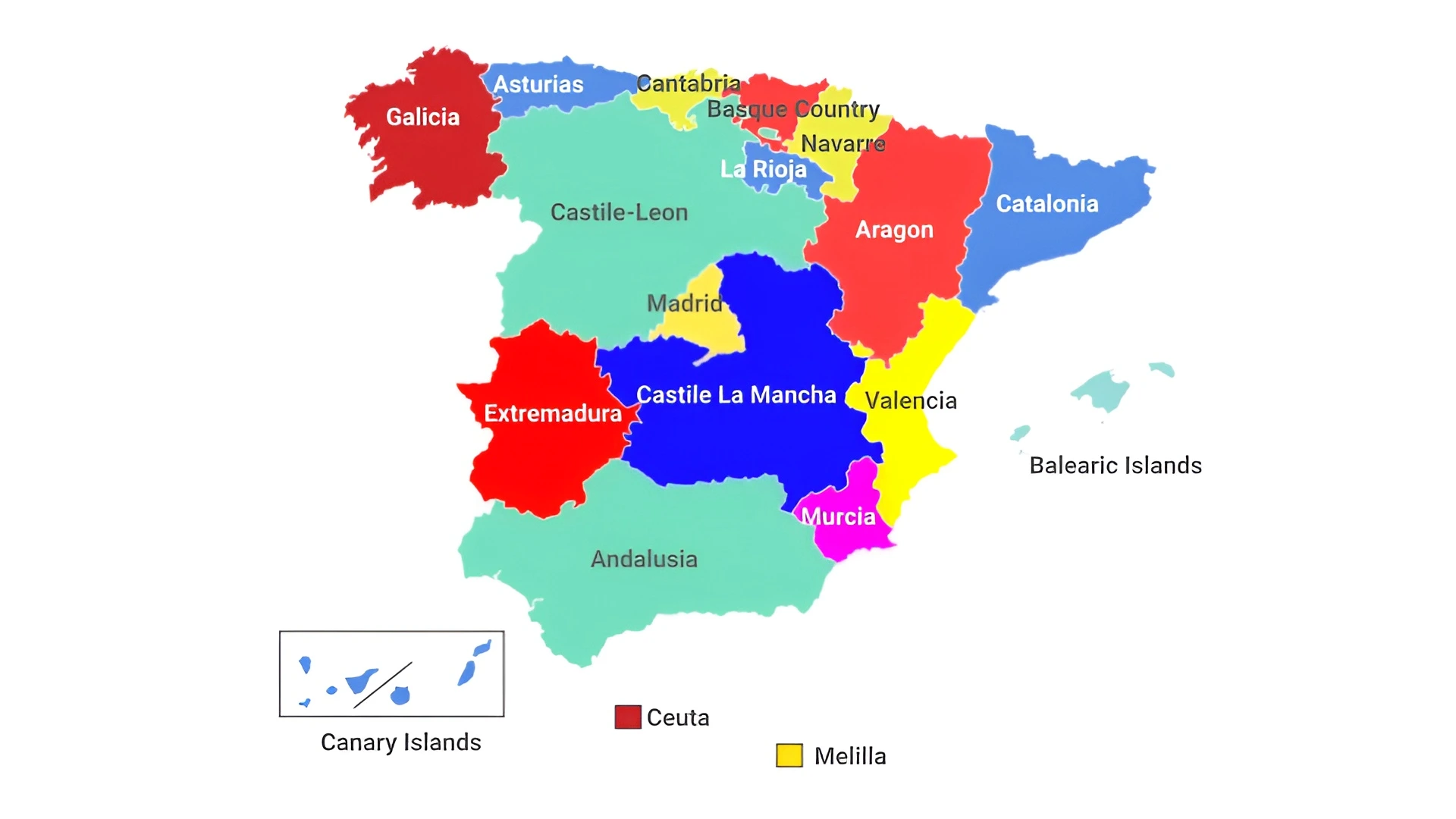
Recent Info Guides
Can You Support Us?
Every year, we help over 30,000 people navigate life in Spain with confidence, providing free, accessible information guides. Our trusted Infoline offers compassionate, one-to-one support to more than 3,000 individuals annually.
None of this would be possible without the generosity of people like you. Your donation ensures we can continue to provide these vital services to those who need them most.


